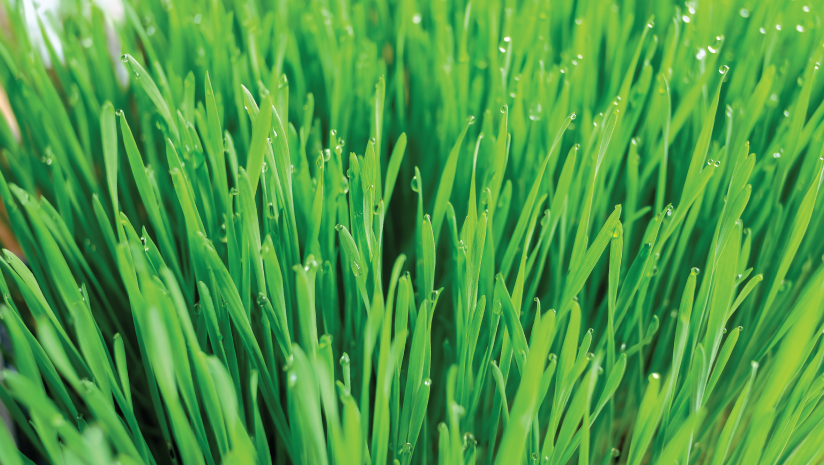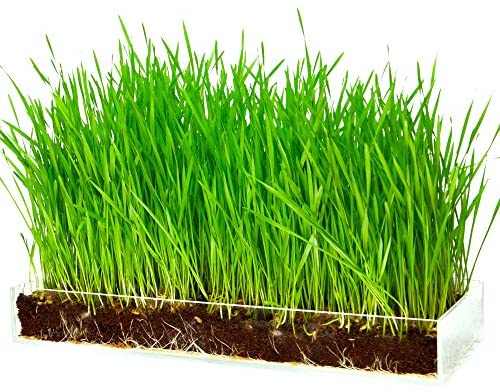A majority of rabbits’ diet consists of hay, while pellets and vegetables, constitute the smaller portion of their diet. So, when it comes to experimenting with the diet of your bunny pets, you should do it, after careful deliberation. You can replace a little amount of hay with other natural foods, one of them being wheatgrass. If you have been wondering about “can rabbits eat wheatgrass,” you have come to the right place, as we aim to give you more information about the same.
Yes, rabbits can eat wheatgrass, provided it is fed to them in the right quantities, according to their age and weight. We will give you more details about these in the following sections.
What is wheatgrass?
Commonly known as Grano, Common Wheat and Bread Wheat, wheatgrass’s scientific name is Thinopyrum intermedium. In the wild, rabbits do eat wheatgrass, as it is easily available. However, when they are domesticated, you may want to keep a check on the quantity of wheatgrass they eat, because overconsumption of wheatgrass may cause some health ailments in rabbits.
Important things to know about feeding wheatgrass to rabbits

Before feeding wheatgrass to your bunny friends, you have to remember two important points. They are:
- Rabbits must be at least 12 weeks old before you feed them wheatgrass.
- While the quantity you feed will depend on their age and body weight, it is highly recommended that you start feeding them 15grams of wheatgrass first, and gradually increase the quantity after being sure that bunnies are not allergic to wheatgrass.
Wheatgrass is a natural food item for rabbits. Therefore, they don’t cause any serious health issues, stomach upsets, or allergic reactions. The only problem that could be faced with wheatgrass is overfeeding it to the rabbits.
Wheatgrass and rabbits
You will be thrilled to notice that rabbits love to eat wheatgrass. Since they almost taste like hay, rabbits wouldn’t mind nibbling on wheatgrass for a long time. Due to immense nutritional benefits, even humans have started to drink wheatgrass juice these days. So, it is only natural to feed your bunny friends some of it, to ensure they stay healthy and active. You can replace a small amount of hay with wheatgrass every day when taking care of rabbits’ diets, provided you get the quantity right. Sometimes, young rabbits may find it difficult to digest wheatgrass. This is why experts suggest feeding wheatgrass to rabbits only if bunnies are at least 12 weeks old.
Quantity of wheatgrass that rabbits can eat

Your veterinarian may give you a calculator that you can use to decide the proportion of hay, pellets, vegetables, and treats for rabbits. If your rabbit is small-sized (weighing just about 1kilo) and aged less than 7 weeks old, its diet should consist of 90% hay and 10% pellets. This means, you shouldn’t include natural vegetables, wheatgrass, and treats in its diet, as it may lead to digestive issues. This proportion varies as your rabbit starts getting bigger and heavier.
Rabbits can belong to small-sized breeds, medium-sized breeds, and large-sized breeds. Here is a look at the quantity of wheatgrass you can feed to these different breeds of rabbits.
- You can feed a maximum of 128 to 130 grams of wheatgrass per day for small-sized breeds of rabbits that weigh between 1.1 and 3.5 pounds.
- You can feed anywhere between 384 and 640 grams of wheatgrass per day for medium-sized breeds of rabbits that weigh around 6 to 10 pounds.
- You can feed a minimum of 384grams and a maximum of 760 grams of wheatgrass per day for large-sized breeds of rabbits that weigh around 9 to 12 pounds.
However, as we already said, it is always better to start introducing about 15 grams of wheatgrass per day to rabbits, during the initial week. Once your bunny friends accept this food very well, you can slowly increase the quantity as per the animals’ weight and size. Also please note that if your rabbit is pregnant, lactating, or suffering from digestive ailments already, you should consult with your veterinarian about the exact amount of wheatgrass you can feed rabbits per day, to be safe than sorry.
What will happen when you overfeed wheatgrass to rabbits?
We have been stressing that you have to feed the right quantity of wheatgrass to rabbits, quite a few times in this article. This is because overconsumption of wheatgrass can lead to some health issues in rabbits like the following:
Gastrointestinal Stasis
Hay is the most important source of fiber for rabbits. The bunnies’ digestive tract and gut system are intact if they get enough fiber per day. However, overfeeding them with wheatgrass and reducing the quantity of hay, will lead to fiber deficiency in rabbits. Gastrointestinal stasis happens when rabbits don’t get enough fiber from their diet.
Diarrhea
Rabbits may take some time to get used to wheatgrass. This is why you need to start them on a paltry 15grams initially, before increasing the quantity gradually. When you feed them too much wheatgrass right in the beginning stages, it could imbalance the digestive system of rabbits, thereby resulting in diarrhea.
Uneaten cecotropes
When rabbits face a nutrient imbalance in their diet, overconsumption of wheatgrass can lead to severe digestive ailments. Uneaten cecotropes are one of them. In this condition, due to some discomfort in its body, the rabbit can’t reach its anus to eat the cecotropes and complete the digestion properly.
Bottom Line
You can easily grow wheatgrass in your garden if you have wheat seeds, good organic soil, water, and sunlight. This is the best form of wheatgrass that can be fed to your bunny pets. However, if you buy from the stores, ensure that you clean wheatgrass properly before feeding them to the rabbits. Please be mindful of the fact that overconsumption of wheatgrass can upset the digestive system of rabbits.
So, start giving them this grass only if they are 12 weeks or older. Always start with only 15grams first to check if your rabbits are okay with wheatgrass before gradually increasing the quantity. So, rabbits can eat wheatgrass as long as you feed them the right amount based on their age and weight.
